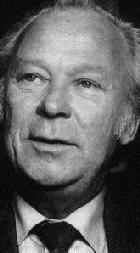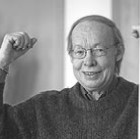
Chamber music is the furthest removed from the National Romantic ideology. As genres, the sonata, the string quartet, the piano trio, etc. have no national content."CMT: Looking back, what were your favorite bits of 2006?
— Erkki Salmenhaara

GoogleEarth KML coordinates for map
DSM: It’s hard to single out just one thing, but our travel to the chamber music festival in Kuhmo, Finland, in July was surely a highlight. You recall the festival was founded in 1970 by cellist Seppo Kimanen. Kuhmo is 600 km (about 7 hours’ drive) northeast of Helsinki, in Karelia near the Finnish-Russian border—extremely beautiful, wild country. Smell of pinetar (tervva) and saunas in the air.

CMT: Yes, what an excellent way to spend two weeks in the woods! The festival in 2006 offered a hundred or so concerts. There were about 200 Finnish and foreign artists, weren’t there? And the audience was about 44,000 (tickets sold).

DSM: And I was surprised to learn that the festival has a permanent year-round staff of seven—divided between offices in Kuhmo and Helsinki. During the festival Kuhmo has more than 250 temporary staff. The total budget for the festival and its concurrent masterclasses was around €1Million last year.

CMT: The spirit of community and camaraderie was really as phenomenal as the music.

DSM: And the opportunity to experience the performances of individual artists as well as ensembles was fantastic.

CMT: The several venues that house the festival events were each distinctive, architecturally and acoustically.

DSM: The relative geographical remoteness of the location combined with the extended duration and the cool nights under the midnight sun to create a magical experience. People let their hair down… Confide things (in words, in music) that they might not otherwise [be able to] confide…

CMT: The food and wine were spectacular in their own right, if you remember!

DSM: And the story-telling! Kippis! Holkun kolkun!

CMT: I think all of the attendees and artists got a healthy share of reflective time also. The weather was calm and the lakes were like glass almost every night.

DSM: Do you remember the stars? I think I have never seen so starry a sky as we saw in Karelia, in Kuhmo, 15 km from the Russian border.

CMT: And, surprisingly, the travel expenses to go and enjoy this festival were pretty modest.

DSM: What about the Live from the Kuhmo Festival CD that the Festival published? Shall we talk about that?



CMT: On this 6-CD set, Toivo Kuula's Piano Trio in A major (1908) has broad melodies, exuberant displays of power, plus sentimentality and deep pathos. The broader range of expression is matched by the increased extent of this trio: it’s in four movements and lasts about 50 minutes. I think it reflects the pardigms of Central European Romanticism—some references to Schubert and Dvorák, and even Grieg in some of the sweeter passages. Next, you might think Melartin’s quartets are excellent, but another fine piece of his chamber music is this String Trio op. 133, written in the early 1920s. The Trio’s interesting because of its stylistic range and texture. The style extends from straight-forward tonality to Modernist elements. This plurality of material escalates throughout the four-movement work and culminates in the rondo-like finale that shifts abruptly from one mood to another. On disc 2, Merikanto’s concerto for violin, clarinet, horn and string sextet (1924) is a chamber concerto of a type typical of the 1920s. It was Merikanto’s greatest international success: it received a shared 1st prize in the competition organized by the German publisher B. Schott’s Söhne, the other 1st prize recipients being Paul Dessau, Ernst Toch, Alexander Tscherepnin and Hermann Wunsch. So the work is often referred to as the “Schott Concerto.” It’s, I’d say, ‘austere’ but it’s also vibrant and fluid. The harmony is rich and varied—at times bitonal and at other times more freely atonal. It has dance rhythms that are characteristic of Merikanto’s writing. In the middle movement in particular these coalesce into a folk dance character. Merikanto, as you may recall, was cruelly treated by his contemporaries, as a result of which he mutilated the scores of his large-scale works by cutting out and destroying pages. Contemporary Finnish composer Paavo Heininen has performed a major cultural service by reconstructing Merikanto’s Symphonic Study (1928) and String Sextet (1932) with such reverence and stylistic insight that it’s virtually impossible to say what’s Merikanto and what’s Heininen.



DSM: Also on disc 2, Erik Bergman ‘Three Fantasies for Clarinet and Piano’ (1953) shows traces of the Romantic tradition but also elements of a more modern, atonal style. In the early 1950s he was the first Finnish composer to devote himself to 12-tone writing, and in a few of his works he even applied row technique to the rhythm and dynamics as well. A change of course in the late 1960s led to his richer style, with more expansive tone color. On disc 3, we have Einar Englund (Sonata for Violin and Piano, 1979). His style is usually associated with Neoclassicism, and his music shows affinities with Prokofiev, Shostakovich and Bartók’s late period. This work is dominated by rhythmic drive and a clear, powerful orchestral sound with a melodic-harmonic thinking, creeping dissonances, and other innovative features—but it’s grounded in tonality, dense motivic work, and thematic compositional approach. Englund was an accomplished pianist, and he composed at the piano. “I play through my material hundreds of times to test it for its fatigue point,” is one of his quotes that I like. Next, Kokkonen, who first used 12-tone technique to good effect in his String Quartet No. 1 (1959). His dodecaphonic period ended with his second string quartet (1966). But even during his 12-tone period Kokkonen composed non-12-tone things. The music of his free-tonal period, like this String Quartet No. 3, has softer, fuller textures and freely combines pure triads, although his melodies are frequently still richly chromatic—relics of his earlier period.



CMT: Sallinen’s Quattro per Quattro (1965) that follows sets off in a new direction but is also in free-tonal style. Although it bears some traces of row technique, it also has some clearly-recognizable triads. This Finnish trend towards retaining or featuring elements of consonance was even stronger in the Sallinen’s violin concerto of 1968. On this disc, his Tango Overture, Op. 74 (1996) has even more expressive melodicism. Simple thematic gestures, clear formal construction, and a use of repetition which pervades every level of the music – these I think are Sallinen’s main stylistic traits. On disc 4, we have Salmenhaara. Critics and musicologists have never quite been able to decide on Salmenhaara’s place in the Finnish music pantheon. His later music is traditional/familiar quasi-classical-romantic—these allusions are there as if to prove his historical awareness? It surely is not mere imitation of past forms. Some experts claim to see traces of minimalism in his use of repetition. The Salmenhaara sonatine on this disc reminds me of that. What’s next? The Meriläinen! Meriläinen’s shifted his writing towards chamber music in the 70s and 80s. Full of meditative gestures and the fragile tones of silence, ominous forces smoldering beneath the surface, erupting in violent outbursts. The coloristic dimension is what captures my attention. This Flute/Mirror of water (1984) is full of the poetry of silence.



DSM: In Pehr Henrik Nordgren's music, he combines elements of twelve-tone technique, Ligeti field technique, the Western tonal tradition, a meditative minimalism related to the music of Arvo Pärt, and Finnish and Japanese folk music. He has mentioned Shostakovich as a particularly strong influence, but the affinity is about expressive aims rather than style. Generally speaking, Nordgren’s music has developed from the relative modernism of his work in the 60s towards now this post-modern spareness. There is an aspect of myth or saga in this string quintet, Op. 110, on disc 4. On disc 5, we have Paavo Heininen, the first Finnish composer to take dodecaphony as a natural starting point. The neo-classical coloring—do you imagine that has something to do with his background as a pianist? Structurally Heininen’s String Quintet here is multidimensional, not just in terms of the various possibilities of creating any entity out of different parts, but also a texture that is throughout exceedingly functional, and the structuring of miniature forms via shifts in this texture. Next, Jouni Kaipainen’s Trio III. The trios are an important aspect in Kaipainen, linking with the ‘absolute’ instrumental tradition. Trio I for clarinet, cello and piano (1983) has a first movement that scuttles past us in a nervous pianissimo; then an ephemeral and emotionally expansive slow movement, followed by a finale that converges the themes of the two previous movements. Trio III (1987) has the long funeral march that forms the middle movement; then composed the two pairs formed by the first and second, and fourth and fifth, movements, giving rise to a symmetrical overall form. Somewhat reminiscent of Bartók’s string quartets, don’t you think?



CMT: Magnus Lindberg’s Clarinet Quintet is on disc 5. When accepting the commission from the Kuhmo Festival to write a clarinet quintet, Lindberg said he first felt scared of the classical “ballast” of such an ensemble. But he says that clarinet is his favorite instrument in the orchestra—and he tried to imitate the ‘tutti’ feeling of an orchestral texture scaled down to the size of a clarinet quintet. The Quintet is in a single movement. Sections are based on either static constructs composed of different scales giving the music an “as seen from outer space” quality, or on directional processes forcing the music to gradually change and physically pushing the music to extreme registers. Then, on disc 6 there is Uljas Pulkkis’ Sonata for Solo Pianoforte. Unlike many Post-Serialists, Pulkkis doesn’t use excessive detail to create textures or sound masses. Equal temperament is not easy to shake off, though, especially in a piano piece. Sonata (1997) is barely tonal in a fascinating way: under the surface there’s a structure which, while not tonal, nevertheless has a tonal core. Then Veli-Matti Puumala’s String Quartet (1994) whose expanded form provides for sustained dramatics. The Quartet is varied in terms of both material and idiom, more than Puumala’s other chamber music. In his own words, he wanted “to reconcile the elements rather than sift and reject” from among them. This is powerful music, the beginning of a new era in his work, but not so much a change of style as an expansion and concentration of his expressive range.
DSM: Thanks! And happy New Year to you!
M usic is not some independently ‘made’ artefact; and composing cannot be kept separate from life, from everything one sees and experiences and feels. I see composition as an outlet for the need to express myself more fully than in speech, a way of communicating with my fellow human beings.”
— Pehr Henrik Nordgren
- Howell T. After Sibelius: Studies in Finnish Music. Ashgate, 2007.
- Korhonen K. Finnish Composers since the 1960s. FMIC, 1995.
- Kuhmo Festival website
- Virtuosi Finland
- Live from the Kuhmo Festival - A Century of Finnish Chamber Music - CD-1. (Ondine, 2002.)
- Live from the Kuhmo Festival - A Century of Finnish Chamber Music - CD-2. (Ondine, 2002.)
- Live from the Kuhmo Festival - A Century of Finnish Chamber Music - CD-3. (Ondine, 2002.)
- Live from the Kuhmo Festival - A Century of Finnish Chamber Music - CD-4. (Ondine, 2002.)
- Live from the Kuhmo Festival - A Century of Finnish Chamber Music - CD-5. (Ondine, 2002.)
- Live from the Kuhmo Festival - A Century of Finnish Chamber Music - CD-6. (Ondine, 2002.)
No comments:
Post a Comment